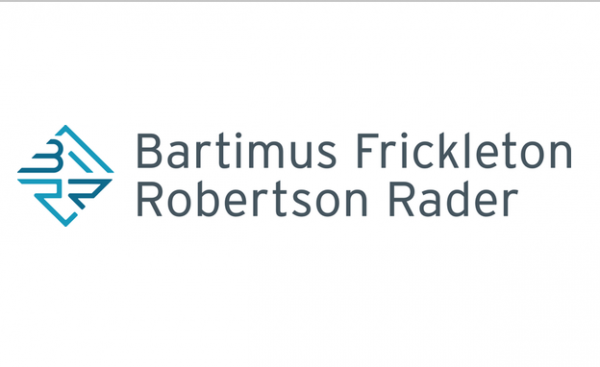
This blog details how to respond to serious burn injuries, the burn injury healing and pain management process, and how explosion and burn attorneys can help protect an individual’s rights after these catastrophic accidents.
Responding to Serious Burn Injuries
Individuals can easily sustain serious burn injuries during common encounters and daily activities. For example, during a routine trip to the store, a person could be part of a severe car crash, resulting in a car fire and causing them to suffer serious burns.
While it’s likely challenging to remain calm during these types of traumatic events, knowing how to respond to serious burn injuries can help an individual reduce the chances of experiencing long-term suffering and, possibly, death.
The following is not medical advice but information from medical sources concerning how healthcare professionals handle serious burn injuries. Consult a medical provider if you or a loved one sustains an injury or a severe burn.
Burn Degrees and Treatments
Burns range in severity from first-degree burns (minor burns that impact the surface of the skin) to fourth-degree burns (very serious burn injuries that impact muscle or bone). Any type of burn is susceptible to infection, so it’s essential to seek medical attention as soon as possible.
First-Degree Burns
First-degree burns, also called minor or superficial burns, only impact the outer layer of skin (the epidermis). This type of burn can occur from accidentally touching a hot object or getting a mild sunburn. After sustaining a first-degree burn, skin may appear red, painful, or dry. Most people do not experience long-term damage from minor burns.
First-Degree Burn Treatment
Unlike serious burn injuries, people may be able to treat minor burns at home. The American Burn Association recommends the following for first-degree burn care:
- First, cleanse the burn with cool water. Do not apply ice, as it can cause more damage. Stop the cooling process if the burn victim starts to shiver from the cool water.
- Take off any watches, jewelry, or clothing that could touch the burn.
- Use over-the-counter pain medication to control pain, and loosely cover the burn with a clean cloth or a sterile bandage; aloe vera may be applied to address burn pain.
- Drink plenty of fluids to stay hydrated.
- If the burn victim starts to run a fever, notices that redness from the burn is radiating out from the burn site, or experiences persistent pain, they should seek medical attention.
Second-Degree Burns
Second-degree burns (partial-thickness or moderate burns) affect the second layer of skin (the dermis). This type of burn is typically caused by coming in contact with a hot object or flame, or from scalding injuries.
Second-degree burns generally are very red, form blisters, and cause swelling and pain. While many second-degree burns can receive the same type of treatment as first-degree burns, more extensive second-degree burns (those larger than 2 to 3 inches) or burns involving joints or other functional parts of the body may need medical attention.
Second-Degree Burn Treatment
If you sustain a second-degree burn, ask a friend or family member to take you to a medical care provider. These burns need immediate evaluation to prevent permanent loss of function or disfigurement.
A medical provider may treat a second-degree burn by:
- Evaluating the site, cleaning it, and applying clean gauze.
- Prescribing an antibiotic cream with silver sulfadiazine.
Third-Degree Burns
Third-degree burns (serious burn injuries or full-thickness burns) destroy the dermis and epidermis. These burns cause charring or make the skin appear white; its texture is often dry or leathery. A person won’t feel pain at the burn site because serious burn injuries destroy nerve endings.
An individual may experience a third-degree burn from flames, a flash from an explosion, hot liquids, hot oil, steam, grease, chemicals, or electrical currents. After experiencing a third-degree burn, a person should seek immediate emergency medical attention.
A medical provider may treat very serious burn injuries by:
- Cleaning and removing dead skin from the burn site
- Prescribing antibiotics (oral, creams, or ointments, or with IV fluids)
- Administering pain medication
This type of burn injury may require hospitalization and cosmetic and functional reconstruction, skin grafting, and nutritional supplementation.
Fourth-Degree Burns
Sometimes, medical professionals will refer to burns that damage bones, muscles, and tendons as fourth-degree burns. These are the most serious burn injuries and may require amputation or cause severe loss of function in an area. Fourth-degree burns typically require hospitalization and long-term treatment and care.
Burn Injury Healing Process
All burn injuries have a different healing process depending on their severity. While most people can heal from a first-degree burn without medical assistance, people who sustain serious burn injuries may need extensive medical treatments and psychological counseling.

Mild-to-moderate burns typically take several days to heal. During the healing process, continue to monitor the burn and check for signs of infection. These signs include:
- Redness that has spread past the burn’s borders.
- Change in appearance of a burn.
- Fever that’s not affected by a fever-reducing medication.
Many first- and second-degree burns itch as they heal. You can decrease this sensation by keeping the burn hydrated and applying topical over-the-counter anti-itch medications.
Healing From Third- and Fourth-Degree Burns
Very serious burn injuries take time to improve. An individual will likely have entire medical teams dedicated to treating their needs and helping them rehabilitate. People healing from third- and fourth-degree burns will likely work with the following medical professionals:
- Plastic (reconstructive) surgeons
- Physiatrists
- Internists
- Orthopedic surgeons
- Infectious disease specialists
- Rehabilitation nurses who work in burn care
- Psychiatrists and psychologists
- Respiratory, occupational, and physical therapists
- Dieticians
- Social workers and case managers
- Recreation therapists
- Vocational counselors
Burn Injury Pain Management
Burn pain is incredibly complex and requires ongoing medical assessment to ensure it’s controlled. Many medical providers may be involved with a patient’s pain management, and medication and non-medication treatments are often used to address serious burn injuries.
- Pain assessment: First, medical providers will want to address the types of pain a patient experiences. Pain comes in many forms and varies in intensity.
- Pain treatment: Pain medication includes over-the-counter medications, opioids, anticonvulsant drugs, sleep medications, and antidepressants.
- Behavioral approaches: Individuals may also experience additional pain relief through non-medication approaches. To ease discomfort, medical providers may use physical therapy, relaxation, activity pacing, thinking techniques, mindfulness meditation, and hypnosis.
- Coping: Psychologists can help individuals address lingering pain and mental discomfort by developing healthy coping skills. These trained professionals help people determine what parts of the situation are in and outside of an individual’s control. Instead of focusing on the “what ifs” of the accident, people can benefit from focusing on things they can change, like their rehabilitation.
Burn Injury Litigation
Individuals who experience serious burn injuries may choose to work with a burn injury lawyer to protect their rights. These experienced lawyers are essential in helping injured people receive compensation for their injuries.
Preparing a Case
First, an explosion and burn lawyer will determine if an individual has a case. If they do, the lawyer will proceed and typically take the following steps:
- Step 1: Gather information about the accident and what happened.
- Step 2: Get additional information about the accident’s details, obtain the individual’s medical records, and gather evidence.
- Step 3: Work with experts to get additional insight into the accident to help determine who may be responsible.
The Importance of Experience
It’s common for people who experience a burn injury because of an accident to sustain catastrophic injuries. These individuals will need a lot of assistance, financial and otherwise, to restore balance in their lives. This means that burn accident litigation is very complex and hard-fought. Individuals will have the best chance to recover their losses when they work with an experienced burn accident lawyer they trust.
Serious burn injuries require complex litigation. Bartimus Frickleton Robertson Rader can help.
Understanding serious burn injuries and their catastrophic results is essential to litigating burn and explosion cases.
When the lawyers at Bartimus Frickleton Robertson Rader represent a client who has experienced a burn accident, we devote the time, resources, and experience to achieving the best possible result.
Individuals will benefit from working with a burn and explosion lawyer with a proven track record of successfully handling personal injury claims. The complexities and challenges of burn and explosion lawsuits require a legal team that knows the intricacies of these cases. Our team has the technical and specialized knowledge, as well as the resources and team of experts, to determine how a burn accident happened and everyone responsible.
For more than 40 years, the attorneys at BFRR have successfully represented some of the region’s most high-profile and high-stakes cases. Although we are centrally located, we have a national impact.
If you or a loved one has suffered serious burn injuries, contact our personal injury lawyers today for a free consultation.
The above is not intended to be legal advice. Each individual case is different and must be analyzed on its own set of facts and circumstances. If you believe you may have a case, it is critically important that you timely contact a lawyer to ensure your rights are protected.


